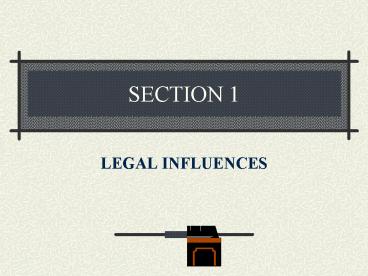LEGAL INFLUENCES - PowerPoint PPT Presentation
1 / 9
Title:
LEGAL INFLUENCES
Description:
Conspiracy Doctrine (from 1830's) Yellow dog contracts (1900) Sherman Anti-trust Act (1890) ... A change in attitude, but no practical effect here (loopholes) ... – PowerPoint PPT presentation
Number of Views:57
Avg rating:3.0/5.0
Title: LEGAL INFLUENCES
1
SECTION 1
- LEGAL INFLUENCES
2
LEGAL INFLUENCES
- Early Court Treatment (1800-1931)
- Conspiracy Doctrine (from 1830s)
- Yellow dog contracts (1900)
- Sherman Anti-trust Act (1890)
- Clayton Act (1914)
- A change in attitude, but no practical effect
here (loopholes) - Injunctions (e.g. Pullman strike)
3
Tide Turning (1926)
- Railway Labor Act (1926)
- Now covers rail air employees
- Est. National Mediation Board
- NMB conducts rep. Elections
- Amendment (1934) outlaws company unions and
yellow dogs
4
The big union push (1930s)
- Norris-LaGuardia Act (1932)
- Employees given freedom of association and from
interference. - Restricted injunction use
- Yellow dogs unenforceable in Fed courts
- Omissions
- Enforcement agency?
- What is employer interference?
5
The Wagner Act (1935)(National Labor Relations
Act)
- Firmly established the right to collectively
bargain (private sector) - Established NLRB
- Details employer bad practices
- Restricting or coercing employees
- Financially contributing to unions
- Refusing to collectively bargain
- Solidifies right to strike, picket, boycott.
6
NLRA Ammendments
- 1947 Taft-Hartley Act (or LMRA)
- Banned closed shop
- Allows passage of RTW laws
- Outlined union unfair labor practices
- De-certification procedures outlined
7
Landrum-Griffin Act (1959) (LMRDA)
- Grew out of McClellan Committee recom. for
eliminating corruption and racketeering found in
some unions - Union democracy increases
- Est. reporting requirements
- Elections every 3,4, or 5 years
- Restrictions on officers
8
The NLRB
- Charged with enforcing NLRA
- 5 Board members General Counsel
- Effective in theory, but.
- Criticisms
- Delays in issuing decisions
- Remedial powers only, (not penal)
- NLRB orders enforced by courts
- Improvements under Chairman Gould
9
Other important legislation
- 1962 President Kennedy executive order
- for Federal employees
- 1970 Postal Reorganization Act
- proposed to resolve an illegal strike
- 1978 Civil Service Reform Act
- the federal public sectors version of the NLRA































